
There is an excellent discussion of the origins and extent of apostasy laws in Islamic contexts by Dr. Ahmet Kuru, Porteous Professor of Political Science at San Diego State University in the online forum Qantara.

There is an excellent discussion of the origins and extent of apostasy laws in Islamic contexts by Dr. Ahmet Kuru, Porteous Professor of Political Science at San Diego State University in the online forum Qantara.
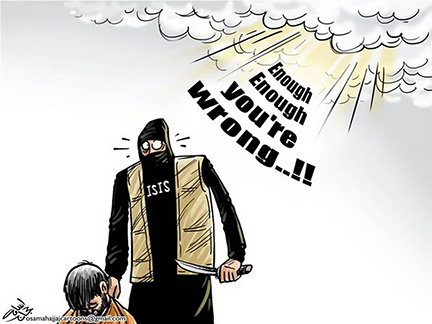
Newsweek has an interesting article by Christiane Gruber, an associate professor and director of graduate studies at the University of Michigan, about Muslim cartoons against ISIS. Check it out here.
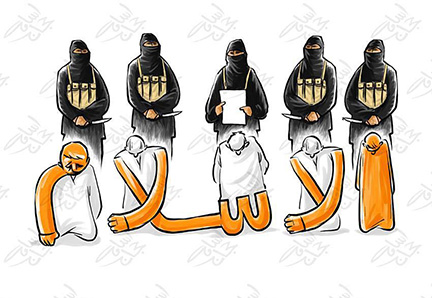

by David Miller and Tom Mills, Open Democracy, January 15, 2015
Terrorism “expert” Steve Emerson is more than a comic buffoon. His claims about no-go zones for non-Muslims in European cities are just part of a wealthy network spreading Islamophobia across the west.
On Sunday, the veteran terrorism expert Steven Emerson appeared on Fox News to discuss Europe’s Muslim population and claimed that Birmingham was an example of a ‘totally Muslim [city] where non-Muslims just simply don’t go in’. The claim led to him being ridiculed online, and after the news media picked up on the story he issued an apology to ‘the beautiful city of Birmingham’ for his ‘terrible error’. So high profile was the story, that the Prime Minister David Cameron felt moved to comment, reportedly describing Emerson as ‘a complete idiot’.
The claims were idiotic. But Emerson is not simply an ‘idiot’, or a hopelessly misinformed ‘expert’. An examination of his background, the sources of his ideas, and the funding for his think tank the Investigative Project on Terrorism, show that he is part of what the Center for American Progress in a widely cited 2011 report Fear Inc. described as ‘a small, tightly networked group of misinformation experts’ that ‘peddle hate and fear of Muslims and Islam’. Continue reading Misinformed expert or misinformation network?

In solidarity with the people killed in Paris, this illustration is accompanied by the caption, “Break one, thousand will rise,” as part of the #JeSuisCharlie hashtag. Many people and media outlets have been sharing this illustration by Lucille Clerc but incorrectly crediting Banksy.
Credit: Lucille Clerc License: All rights reserved..
by Omid Safi, Director of Duke University’s Islamic Studies Center, On-being, January 8, 2015
As a person of faith, times like these try my soul. Times like these are precisely when we need to turn to our faith. We turn inward, not because the answers are easy, but because not turning inward is unthinkable in moments of crisis.
So let us begin, not with the cartoons at the center of the shootings at the office of Charlie Hebdo in Paris, but with the human beings. Let it always be about the human beings:
• Stéphane “Charb” Charbonnier, 47 (editor)
• Bernard Maris, 68 (economist)
• Georges Wolinski, 80 (cartoonist)
• Jean “Cabu” Cabut, 78 (cartoonist)
• Bernard “Tignous” Verlhac, 57 (cartoonist)
• Philippe Honoré, 73 (cartoonist)
• Elsa Cayat (columnist)
• Michel Renaud (a guest)
• Frederic Boisseau (building maintenance worker)
• Franck Brinsolaro, 49 (a police officer)
• Moustapha Ourrad (copy editor)… It’s not Muslims vs. cartoonists, as long as there are Muslim cartoonists.
• Ahmed Merabet, 42, (police officer)… A Muslim who died protecting the cartoonists from Muslim terrorists. Muslim vs. Muslim.
And brothers Said Kouachi and Cherif Kouachi, and Hamyd Mourad — the shooters, with a legacy of crime behind them.
I try to resist the urge to turn the victims into saintly beings, or the shooters into embodiments of evil. We are all imperfect beings, walking contradictions of selfishness and beauty. And sometimes, like the actions of the Kouachi brothers and Mourad, it results in acts of unspeakable atrocity.
So how do we process this horrific news? Let me suggest nine steps:
image
Muslim police officer Ahmed Merabet. He was shot in the head while lying on the ground begging for mercy on the streets near Charlie Hebdo’s office building.
1) Begin with grief.
We begin where we are, where our hearts are. Let us take the time to bury the dead, to mourn, and to grieve. Let us mourn that we have created a world in which such violence seems to be everyday. We mourn the eruption of violence. We mourn the fact that our children are growing up in a world where violence is so banal. Continue reading 9 Points to Ponder on the Paris Shooting and Charlie Hebdo
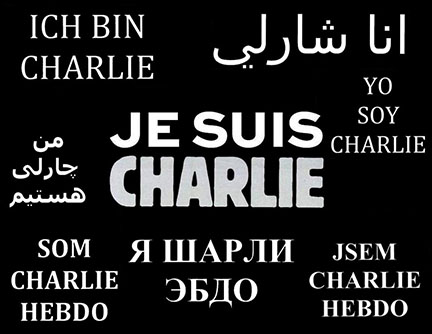
By Juan Cole | (Informed Comment)
The horrific murder of the editor, cartoonists and other staff of the irreverent satirical weekly Charlie Hebdo, along with two policemen, by terrorists in Paris was in my view a strategic strike, aiming at polarizing the French and European public.
The problem for a terrorist group like al-Qaeda is that its recruitment pool is Muslims, but most Muslims are not interested in terrorism. Most Muslims are not even interested in politics, much less political Islam. France is a country of 66 million, of which about 5 million is of Muslim heritage. But in polling, only a third, less than 2 million, say that they are interested in religion. French Muslims may be the most secular Muslim-heritage population in the world (ex-Soviet ethnic Muslims often also have low rates of belief and observance). Many Muslim immigrants in the post-war period to France came as laborers and were not literate people, and their grandchildren are rather distant from Middle Eastern fundamentalism, pursuing urban cosmopolitan culture such as rap and rai. In Paris, where Muslims tend to be better educated and more religious, the vast majority reject violence and say they are loyal to France.
Al-Qaeda wants to mentally colonize French Muslims, but faces a wall of disinterest. But if it can get non-Muslim French to be beastly to ethnic Muslims on the grounds that they are Muslims, it can start creating a common political identity around grievance against discrimination. Continue reading Sharpening Contradictions: Why al-Qaeda attacked Satirists in Paris
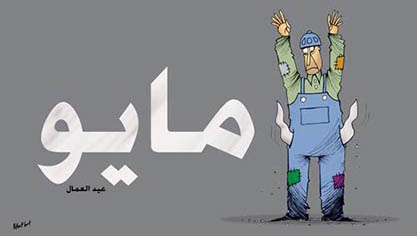
Enjoy May Day?

The future belongs to the young, no matter how much older generations try to shape that future. Educations plays a key role, as does the whole family context, but in the past century it is the expansion of media that has establishing a seemingly hegemonic control over the curiosity of the young. Disney launched the careers of Mickey Mouse and Donald Duck, not to mention the lily white Snow White or comfortably brown Bambi. In my day there was Woody Woodpecker, but my son’s generation was mesmerized by the Ninja Turtles. I have not kept up with cartoon evolution, but I had heard something about a cheesy character named Sponge Bob. It seems that there are many episodes of Sponge Bob available in Arabic on Youtube. The image above is from an adventure in a hibernating-bear-in-an-igloo winterland.
I have seen Arabic translations of Western and Japanese cartoon shows before, and anthropologist Mark Peterson has written a fascinating ethnography (Connected in Cairo: Growing Up Cosmopolitan in the Modern Middle East, Indiana University Press 2011) about the Pokemon phenomenon and other comic characters in Cairo. It is important to remember that the urban generation that has taken to the streets in the Arab Spring and lives and dies through the social media has also been brought up in a steady diet of cartoons, both comic books and videos. While academics have been arguing over the impact of erudite Orientalism, there is a far more potent source influencing the thought of the young: I call this “cartoonality,” the shaping of opinion through fictional non-human or ultra-human cartoon characters. Continue reading Sponge Bob in Winterland
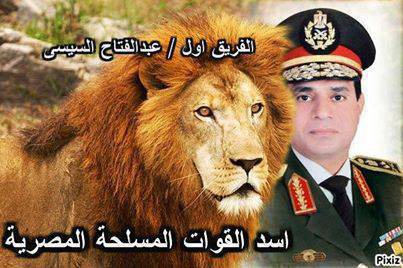
The new not-a-coup leader of Egypt, General Abdel Fattah Sisi, has created a sensation. Not all of the response is serious, however. A dancer named Sophia attempts a belly dance while holding a picture of the general and blowing kisses to the camera.

And as for the new direction of security in the post-Muslim-Brotherhood state, you need look no further than a woman’s underwear. Now that the Muslim Brotherhood has been outlawed, chic underwear is in again.

Catoonists have also had a field day with the lionizing of the general. Continue reading Sensational Sisi